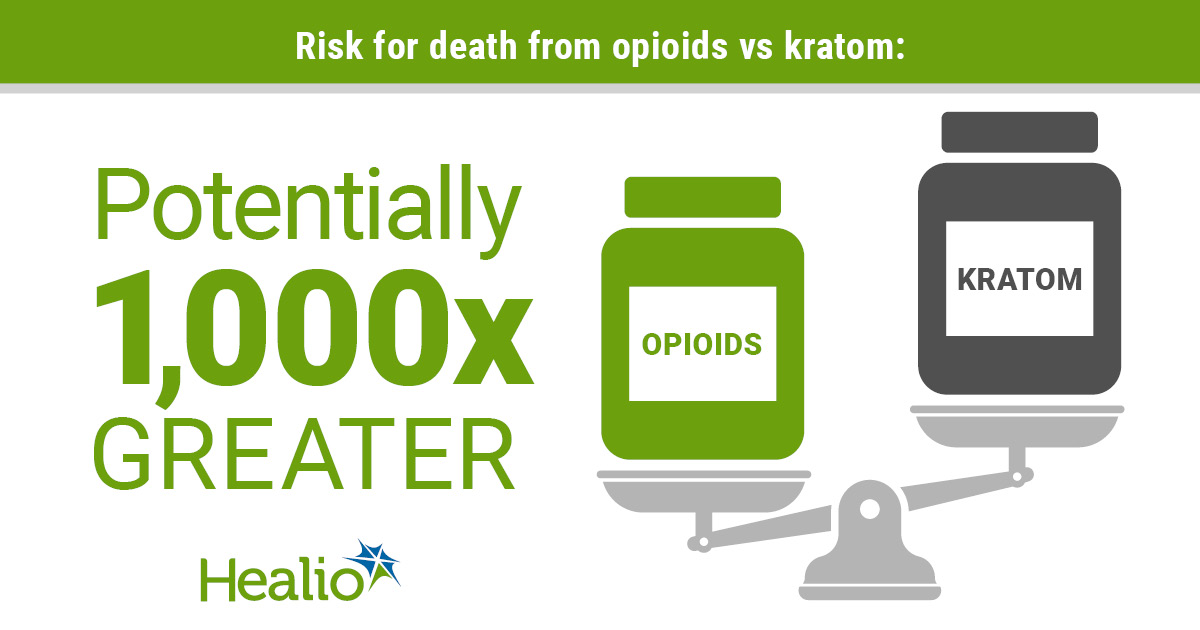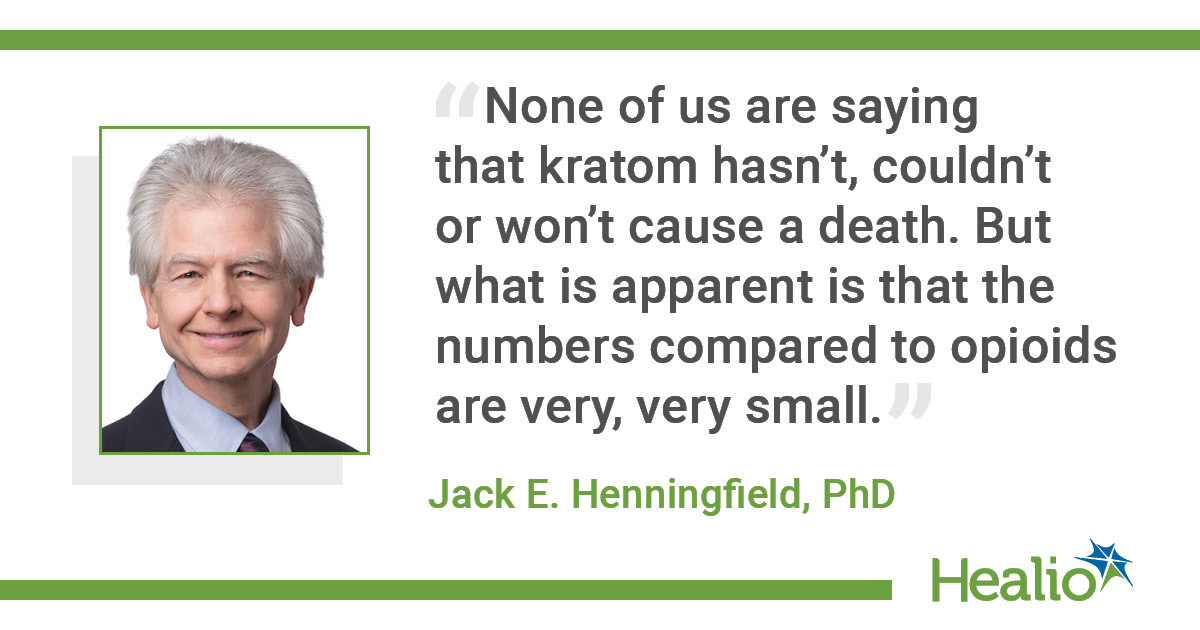Kratom’s risk obscured by ‘soft data’
The FDA has repeatedly stated that kratom is dangerous, saying it can lead addiction and in some cases, death. However, some experts continue to press forward to convince the Drug Enforcement Administration to legalize kratom — touted as an alternative approach to pain management.
Marc T. Swogger, PhD, a co-author of a 2018 article about kratom’s risks and benefits, told Healio Primary Care that there is “no good evidence that kratom is ‘deadly.’”
“The overall data suggest that kratom is a relatively mild plant that is helping people and is an important tool for fighting the opioid problem,” he said.
New evidence

Those in favor of legalizing kratom say they have new evidence to make their point: a report in Preventive Medicine showing that the risk for overdose death is more than 1,000 times greater for opioid users than for kratom users.
“Our estimated range is based on import and export data from the American Kratom Association and the number of deaths that the FDA has associated with kratom to date,” Jack E. Henningfield, PhD, adjunct professor at Johns Hopkins University and lead author of the new report, said in an interview. “After that, it’s simple math.”
However, experts are questioning the accuracy of the findings.
For example, Bruce Chabner, MD, clinical director emeritus at Massachusetts General Hospital Cancer Center, said the estimate “depends on very soft data, such as whether clinicians accurately record all the drugs that the patients were taking.”
“Do clinicians ask a patient if they took kratom? In most instances, the answer is no,” he explained.
C. Michael White, PharmD, FCP, FCCP, head of the department of pharmacy practice at the University of Connecticut, agreed that the problem stems from the way data are collected on overdoses from kratom vs. opioids.
“You have apples and gorillas based on how the data are collected, and you are trying to do an apples-to-apples comparison,” he told Healio Primary Care.
White also said that kratom-attributed deaths are difficult to estimate in the face of polypharmacy.
“Until recently, no one looked for kratom, and it wasn’t a part of standard drug screens,” he said. In addition, “determining potential users by how much product is shipped to the United States is also quite imprecise. None of this means that Henningfield used an inferior method, just a poor one.”
White suggested that a Markov model controlling for several covariates would be a better way to ascertain the risk for overdose associated with kratom.
Henningfield acknowledged that the study has several limitations based on the data his team used.
“We desperately need a national survey,” he said.
However, even if the data were more substantial, kratom is still dangerous and illegal, according to Chabner, who says he has treated a patient with a liver injury that was linked to kratom.

“I don’t believe in patients taking anything potentially contaminated or potentially toxic, particularly if the product is not regulated by the FDA,” he said.
Walter C. Prozialeck, PhD, professor in the department of pharmacology, Chicago College of Osteopathic Medicine at Midwestern University, told Healio Primary Care that he respected Henningfield and his research team, but “there are too many questions about quality of kratom products that haven’t been answered, so I can’t recommend that physicians advise patients to use it at this point.”
Despite these concerns, Henningfield said the deadly toll of the opioid crisis still warrants the legalization of kratom.
“None of us are saying that kratom hasn’t, couldn’t or won’t cause a death,” he said. “But what is apparent is that the numbers compared to opioids are very, very small. Aspirin has risk. Driving has risk. With everything, risk is always relative.” – by Janel Miller
References:
Henningfield JE, et al. Prev Med. 2019;doi:10.1016/j.ypmed.2019.105851.
NIH. Kratom. https://www.drugabuse.gov/publications/drugfacts/kratom
Disclosures: Chabner reports professional relationships with BioMarin, Celgene, Eli Lilly, Epizyme, Gilead Sciences, Merrimack, Pharmacyclics, Sanofi, Seattle Genetics and Zeltia. Henningfield reports consulting support through Pinney Associates on the development of abuse potential assessments and eight-factor analyses according to the Controlled Substances Act and the dietary industry, including the American Kratom Association. Prozialeck, Swogger and White report no relevant financial disclosures.

